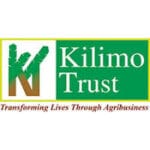AboutPhysical Sciences
Physical Sciences investigate physical and chemical phenomena. This is done through scientific inquiry, application of scientific models, theories and laws in order to explain and predict events in the physical environment.
This subject also deals with society’s need to understand how the physical environment works in order to benefit from it and responsibly care for it. All scientific and technological knowledge, including Indigenous Knowledge Systems (IKS), is used to address challenges facing society. Indigenous knowledge is knowledge that communities have held, used or are still using; this knowledge has been passed on through generations and has been a source of many innovations and developments including scientific developments. Some concepts found in Indigenous Knowledge Systems lend themselves to explanation using the scientific method while other concepts do not; this is still knowledge however.
SPECIFIC AIMS OF PHYSICAL SCIENCES
The purpose of Physical Sciences is to make learners aware of their environment and to equip learners with investigating skills relating to physical and chemical phenomena, for example, lightning and solubility. Examples of some of the skills that are relevant for the study of Physical Sciences are classifying, communicating, measuring, designing an investigation, drawing and evaluating conclusions, formulating models, hypothesising, identifying and controlling variables, inferring, observing and comparing, interpreting, predicting, problem-solving and reflective skills.
Physical Sciences promotes knowledge and skills in scientific inquiry and problem solving; the construction and application of scientific and technological knowledge; an understanding of the nature of science and its relationships to technology, society and the environment.
Physical Sciences prepares learners for future learning, specialist learning, employment, citizenship, holistic development, socio-economic development, and environmental management. Learners choosing Physical Sciences as a subject in Grades 10-12, including those with barriers to learning, can have improved access to: academic courses in Higher Education; professional career paths related to applied science courses and vocational career paths. Physical Sciences plays an increasingly important role in the lives of all South Africans owing to their influence on scientific and technological development, which are necessary for the country’s economic growth and the social wellbeing of its people.
Six main knowledge areas inform the subject Physical Sciences. These are:
- Matter and Materials
- Chemical Systems
- Chemical Change
- Mechanics
- Waves, Sound and Light
- Electricity and Magnetism
Assessment Taxonomy
Application exercises should be done at all cognitive levels in all knowledge areas. Refer to Appendix 1 for the assessment taxonomy at cognitive levels one to four. Recommended Informal Assessment
- Give learners at least two problem-solving exercises on a frequent basis (every day as far as possible). These should collectively cover all cognitive levels and could be done as homework and/or class work.
- Learners should do at least ONE practical activity per term.
- Learners should be given at least ONE informal test per term.
NOTE
- Informal assessment tasks are homework, class work, practical investigations, experiments and informal tests.
- Informal assessment tasks will assess structured problem solving involving calculations, practical investigations, experiments, projects, scientific arguments, ability to predict, observe and explain. Informal assessment tasks should also include problem-solving exercises that do not involve calculations.
- Formal assessment tasks are control tests, examinations, experiments and projects.
- “Practical activities” as used in this document will refer to practical demonstrations, experiments or projects used to strengthen the concepts being taught.
- “Experiment” will refer to a set of outlined instructions for learners to follow in order to obtain results to verify established theory.
- “Practical investigations” will require learners to go through the scientific process.
TIME ALLOCATION OF PHYSICAL SCIENCES IN THE CURRICULUM
The teaching time for Physical Sciences is 4 hours per week, with 40 weeks in total per grade. The time allocated for the teaching of the content, concepts and skills includes the practical work. These are an integral part of the teaching and learning process.
| GRADE | NO. OF WEEkS ALLOCATED | CONTENT, CONCEPTS & SkILLS (WEEkS) | FORMAL ASSESSMENT (WEEkS) |
| 10 | 40 | 30 | 10 |
| 11 | 40 | 30 | 10 |
| 12 | 40 | 29 | 11 |
OVERVIEW OF TOPICS
| Topic | Content | |
| Mechanics | Grade 10 | Introduction to vectors & scalars; Motion in one dimension (reference frame, position, displacement and distance , average speed, average velocity, acceleration, instantaneous velocity, instantaneous speed, description of motion in words, diagrams, graphs and equations.) Energy (gravitational potential energy, kinetic energy, mechanical energy, conservation of mechanical energy (in the absence of dissipative forces)) 30 hours |
| Grade 11 | Vectors in two dimensions (resultant of perpendicular vectors, resolution of a vector into its parallel and perpendicular components), Newton’s Laws and Application of Newton’s Laws (Newton’s first, second and third laws and Newton’s law of universal gravitation, different kinds of forces: weight, normal force, frictional force, applied (push, pull), tension (strings or cables), force diagrams, free body diagrams and application of Newton’s laws(equilibrium and non- equilibrium)) 27 hours | |
| Grade 12 | Momentum and Impulse (momentum, Newton’s second law expressed in terms of momentum, conservation of momentum and elastic and inelastic collisions, Impulse), Vertical projectile motion in one dimension (1D) (vertical projectile motion represented in words, diagrams, equations and graphs), Work, Energy & Power (work , work-energy theorem, conservation of energy with non-conservative forces present, power) 28 hours | |
| Waves, Sound & Light | Grade 10 | Transverse pulses on a string or spring (pulse, amplitude superposition of pulses), Transverse waves (wavelength, frequency, amplitude, period, wave speed, Longitudinal waves (on a spring, wavelength, frequency, amplitude, period, wave speed, sound waves), Sound (pitch, loudness, quality (tone), ultrasound), Electromagnetic radiation (dual (particle/ wave) nature of electromagnetic (EM) radiation, nature of EM radiation, EM spectrum, nature of EM as particle – energy of a photon related to frequency and wavelength) 16 hours |
| Grade 11 | Geometrical Optics (Refraction, Snell’s Law, Critical angles and total internal reflection), 2D & 3D Wave fronts (Diffraction) 13 hours | |
| Grade 12 | Doppler Effect (either moving source or moving observer) (with sound and ultrasound, with light – red shifts in the universe.) 6 hours | |
| Electricity & Magnetism | Grade 10 | Magnetism (magnetic field of permanent magnets, poles of permanent magnets, attraction and repulsion, magnetic field lines, earth’s magnetic field, compass), Electrostatics (two kinds of charge, force exerted by charges on each other (descriptive), attraction between charged and uncharged objects (polarisation), charge conservation, charge quantization ),Electric circuits (emf, potential difference (pd), current, measurement of voltage (pd) and current, resistance, resistors in parallel) 14 hours |
| Grade 11 | Electrostatics (Coulomb’s Law, Electric field), Electromagnetism (Magnetic field associated with current-carrying wires, Faraday’s Law), Electric circuits (Energy, Power) 20 hours | |
| Grade 12 | Electric circuits (internal resistance and series-parallel networks), Electrodynamics (electrical machines (generators, motors), alternating current) 12 hours | |
| Matter & Materials | Grade 10 | Revise matter and classification (materials; heterogeneous and homogeneous mixtures; pure substances; names and formulas; metals and non-metals; electrical and thermal conductors and insulators; magnetic and nonmagnetic materials). States of matter and the kinetic molecular theory. Atomic structure (models of the atom; atomic mass and diameter; protons, neutrons and electrons; isotopes; energy quantization and electron configuration). Periodic table (position of the elements; similarities in chemical properties in groups, electron configuration in groups). Chemical bonding (covalent bonding; ionic bonding; metallic bonding). Particles substances are made of (atoms and compounds; molecular substances and ionic substances). 28 hours |
| Grade 11 | Molecular structure (a chemical bond; molecular shape; electronegativity and bond polarity; bond energy and bond length). Intermolecular forces (chemical bonds revised; types of intermolecular forces; states of matter; density; kinetic energy; temperature; three phases of water (macroscopic properties related to sub-microscopic structure)). Ideal gases (motion and kinetic theory of gases; gas laws; relationship between T and P) 24 hours | |
| Grade 12 | Optical phenomena and properties of materials (photo-electric effect, emission and absorption spectra) (6 hours for physics) Organic chemistry (functional groups; saturated and unsaturated structures; isomers; naming and formulae; physical properties; chemical reactions (substitution, addition and elimination). Organic macromolecules (plastics and polymers) 16 hours | |
| Topic | Content | |
| Chemical Systems | Grade 10 | Hydrosphere 8 hours |
| Grade 11 | Lithosphere (mining; energy resources) 8 hours | |
| Grade 12 | Chemical industry (fertilizer industry). 6 hours | |
| Chemical Change | Grade 10 | Physical and chemical change (separation by physical means; separation by chemical means; conservation of atoms and mass; law of constant composition).Representing chemical change (balanced chemical equations). Reactions in aqueous solution (ions in aqueous solutions; ion interaction; electrolytes; conductivity; precipitation; chemical reaction types) Stoichiometry (mole concept). 20 hours |
| Grade 11 | Stoichiometry (molar volume of gases; concentration; limiting reagents; volume relationships in gaseous reactions) Energy and chemical change (energy changes related to bond energy; exothermic and endothermic reactions; activation energy). Types of reactions (acid-base; redox reactions; oxidation numbers 28 hours | |
| Grade 12 | Reaction rate (factors affecting rate; measuring rate; mechanism of reaction and of catalysis). Chemical equilibrium (factors affecting equilibrium; equilibrium constant; application of equilibrium principles). Acids and bases (reactions; titrations, pH, salt hydrolysis). Electrochemical reactions (electrolytic and galvanic cells; relation of current and potential to rate and equilibrium; standard electrode potentials; oxidation and reduction half reaction and cell reactions; oxidation numbers; application of redox reactions). 28 hours | |
| Skills for practical investigations | Grade 12 | Skills for practical investigations in physics and chemistry. 4 hours |












